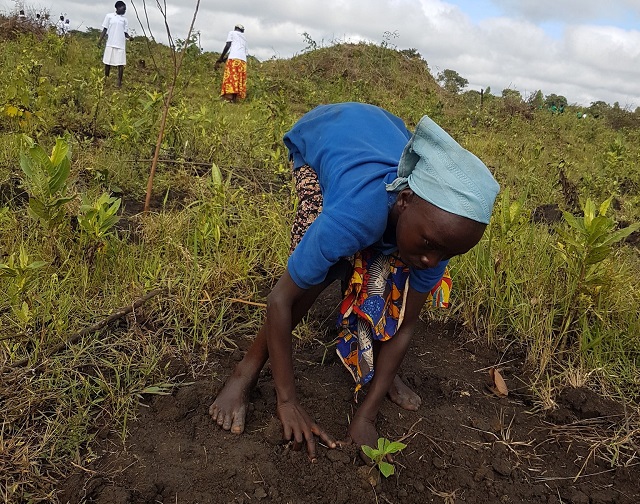
Kampala, Uganda | THE INDEPENDENT | United Nations High Commissioner for Refugees-UNHCR in conjunction with the National Forestry Authority-NFA has embarked on the restoration of part of the degraded Bugoma central forest reserve in Kikuube district.
The restoration exercise dubbed “Environment, energy, forestry protection and conservation” is aimed at restoring 100 of the 150 hectares of the degraded forest land due to illegal activities by refugees from Kyangwali refugee settlement.
The refugees descended on the forest reserve for timber, fire wood and farm land. Stuart Maniraguha, the Director Plantation Development in the National Forestry Authority-NFA, says their target is to restore 100 hectares of the forest with indigenous tree species.
He says they have already planted 50% of the degraded forest cover. Maniraguha says they will also plant 100 hectares of Bamboo trees to respond to the energy demands, adding that the Bamboo trees will form the buffer zone. He says those in need of fire wood, fuel wood or poles for construction will stop on the Bamboo trees.
Jolly Kebirungi, the Commandant Kyangwali Refugee Settlement area, says the exercise will help restore the vast part of the forest reserve that had been degraded by refugees. She says restoration of the degraded forest cover is key and crucial for human survival and biodiversity.
Bugoma Central Forest Reserve covers 410 square kilometers of land. At least 40 kilometers of the forest is a tropical forest. Bugoma forest reserve is endowed with a high Biodiversity with 24 species of mammals, 465 species of trees, 359 species of birds, 289 species of butterflies and 130 species of moths.
The mammals include monkeys, chimpanzees, buffaloes, Uganda Kobs and at times elephants.
A 2012 Chimpanzee census discovered that 10 percent of Uganda’s Chimpanzee population was in Bugoma forest.
However, forest reserve suffered serious encroachment in the past few years due to farming, charcoal burning, lumbering and livestock farming. Uganda loses about 100,000 hectares of forests cover every year.
******
URN
 The Independent Uganda: You get the Truth we Pay the Price
The Independent Uganda: You get the Truth we Pay the Price



